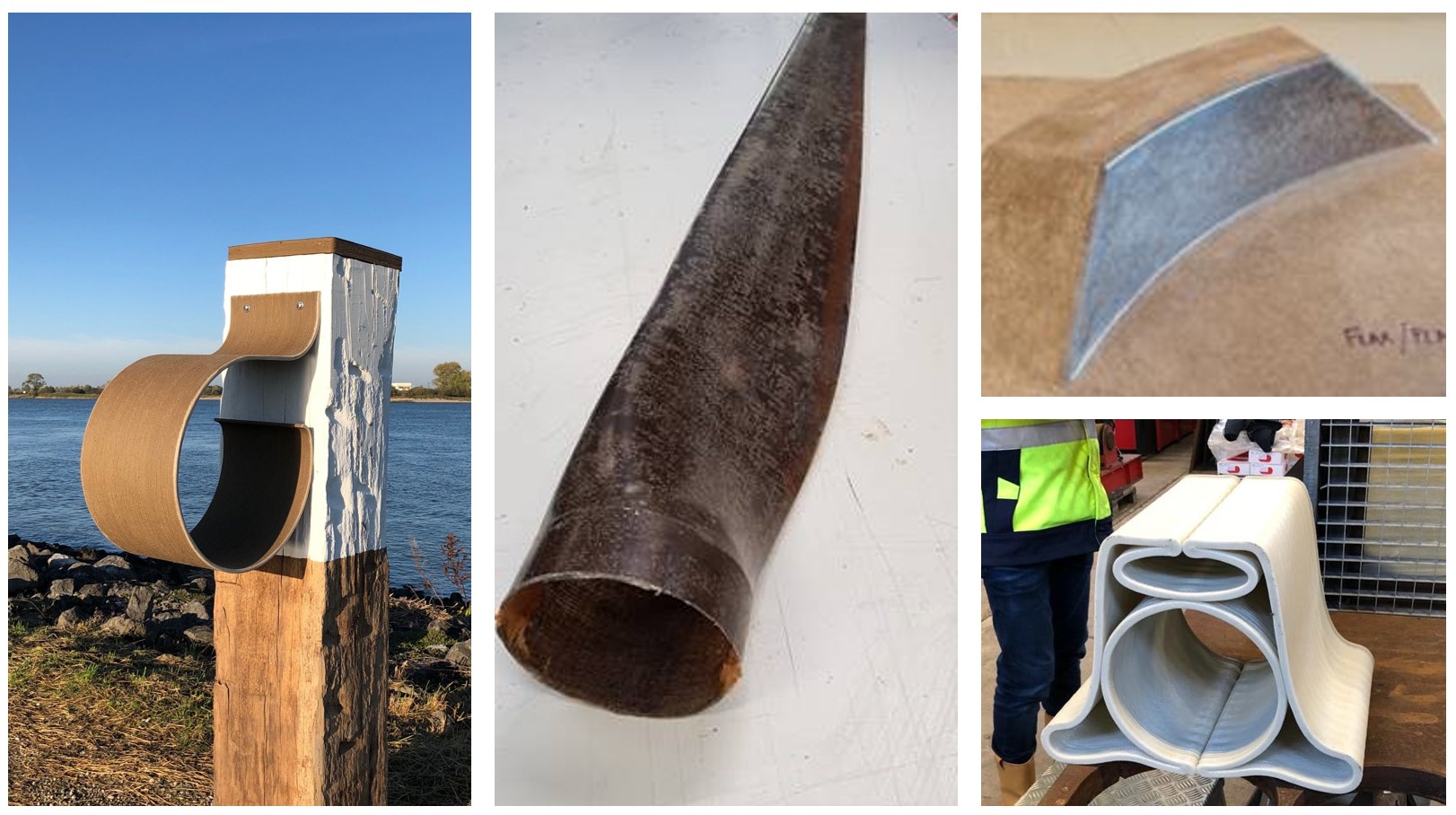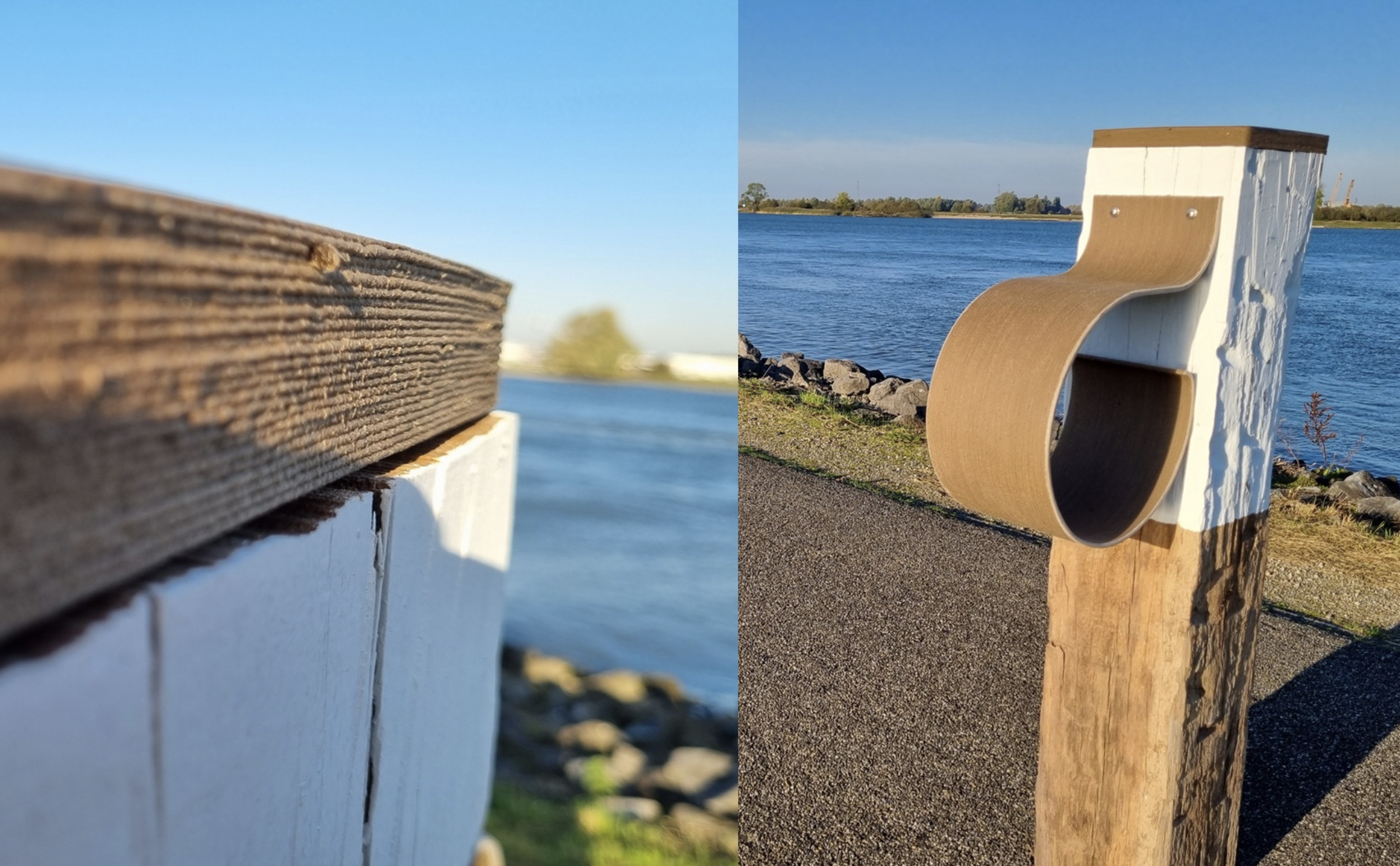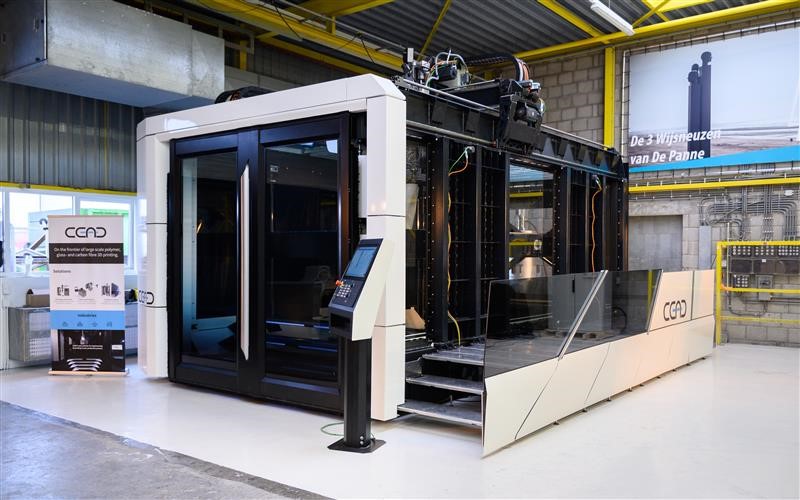Concerns about the impact of plastic litter and microplastics in the oceans are at the forefront of environmental study. For decades, the marine environment has suffered from the degradation of fossil-based polymers – the vast majority of plastic products – which are transported by currents and accumulate on beaches, in the sea, and even on Arctic Sea ice. To turn the tides, bio-based polymer composites have emerged. This suitable replacement for fossil resources could serve the growing demand for marine composites, primarily driven by fish and seaweed farming, energy harvesting, pontoons, and more.
Enter SeaBioComp
Working on these composites is a European project called SeaBioComp. Created to address the challenge of making a renewable material that can reduce the ecotoxic impact of microplastics and withstand the long-term harsh marine environment, SeaBioComp has developed a flax-based thermoplastic biocomposite. The project has 3D printed several initial prototype products, including a fender and other port structures using the new material. Moreover, it has shown that polymers and composite materials made from a natural-sourced feedstock, such as biopolymers and biocomposites, are seen as a potential alternative to fossil-based polymers, but with lower environmental impacts, such as microplastic formation.

A selection of SeaBioComp demonstrator products for maritime applications. Image courtesy of SeaBioComp.
Co-funded under the European Union’s Interreg 2 Seas program, SeaBioComp has been actively pursuing the creation of a durable bio-based composite for marine environments since 2019 with a budget of €4.1 million ($4.2 million). More than half of the funding comes from the European Regional Development Fund (ERDF), which has already financed other 3D printing-related projects in the region, including Portugal’s first robot for high-performance and large dimension metal 3D printing.
Led by Centexbel, a Belgian textile research organization, SeaBioComp is also developing analytical protocols to evaluate the long-term durability of its materials to reduce the ecological impact on the marine environment.
Project partners in the team, including research organizations, textile, composite specialists, universities, and cluster organizations, have worked together for the past three years to develop, mechanically test, and research several bio-based formulations using different manufacturing techniques. As a result, the consortium created two different kinds of biocomposites.
Forming Biocomposites
First, the project created a self-reinforced polylactide (PLA)-composite, which has been made into various non-woven and woven fabrics suitable for compression molding. Secondly, the team developed a novel flax-reinforced PLA or acrylic (PMMA) reinforced composite for use via the Resin Infusion under Flexible Tooling (RIFT) manufacturing process, compression molding, and additive manufacturing.
Following extensive testing of the mechanical properties of the various biocomposites developed by SeaBioComp, researchers and experts concluded that these materials “are close to and in some instances perform better than conventional non-bio-based composites,” such as sheet molded composite (SMC) currently in use in marine settings today. The novel bio-based products have been shown to use the same compression molding conditions as conventional products, and sometimes, the process cycle time can be shorter.

A selection of SeaBioComp demonstrator products for maritime applications. Image courtesy of SeaBioComp.
Additionally, as part of the motivation to create a product that can help reduce the environmental impact on the oceans, early research in the project identified flax as the most suitable natural plant fiber to be used as reinforcement in the biocomposite. Flax absorbs much carbon dioxide during growth and cleans the soil through phytoremediation. This plant-based approach involves using plants to extract and remove elemental pollutants or lower their bioavailability in soil.
The project has also determined that these bio-based self-reinforced polylactic products are suitable for use in the marine environment from a durability and microplastic formation perspective. In fact, a new paper published in the Polymer Testing journal discusses the potential for bio-composites to be considered a promising material for sustainable marine applications.

Demonstrator for the SeaBioComp Interreg Europe project. Image courtesy of Poly Products via LinkedIn.
Countering the global sources of marine pollution has led the team at SeaBioComp to combine thermoplastic polymers, natural fibers, and 3D printing technologies. The results are technically complex designs and applications being produced for marine settings. Aside from a fender and other port structures, SeaBioComp has also used large-scale additive manufacturing techniques to create other semi-industrial demonstrators, including a boat pump and top cover.
3D Printing Biocomposites
In 2020, SeaBioComp revealed that it relied on an FDM printer built by Netherlands AM technology supplier CEAD and installed at industrial manufacturer Poly Products, also in the Netherlands. The machine can print very large products, making it an exciting technique for printing biocomposite outputs for marine applications as minor assembly is required once the complex geometries are printed.

SeaBioComp used a CEAD FDM printer to demonstrate the use of bio-based thermoplastic composites in various maritime applications. Image courtesy of CEAD.
In addition to the eco benefits of the new material, 3D printing is also considered by SeaBioComp as an eco-efficient manufacturing process. As compared with traditional product manufacturing, the 3D printing of biopolymers has a large eco-efficiency because it doesn’t need molds, there is practically no production waste (such as trimming losses), it is compatible with the sustainable material developed by the project, and the 3D printed product can be recycled after its end-of-life.
As part of its cross-border approach and to ensure that its goals stay on track, SeaBioComp has combined an extensive network of academia, industry, and research organizations that could ensure its materials remain industrially relevant, including the University of Plymouth in England, cluster organization Marine South East, and the ARMINES research center in Paris, France.
Subscribe to Our Email Newsletter
Stay up-to-date on all the latest news from the 3D printing industry and receive information and offers from third party vendors.
You May Also Like
Why Corrosive Resistant Materials Are Important to the Success of 3D Printing Across Industries
The adoption of additive manufacturing (AM) is accelerating across many major industries. As this technological shift unfolds, the importance of corrosion resistance has emerged as a challenge for 3D printing...
America Makes Announces IMPACT 2.0: $6.6M in New 3D Printing Funding
America Makes, the Manufacturing Innovation Institute (MII) based in Youngstown, Ohio, has announced IMPACT (Improvement in Manufacturing Productivity via Additive Capabilities and Techno-Economic Analysis) 2.0, a project call which will...
3D Printing Webinar and Event Roundup: April 14, 2024
We’re starting off the week’s 3D printing webinars and events at ASTM AMCOE’s 11th Snapshot Workshop and MACH Exhibition. Stratasys continues its advanced training courses, SME is holding a virtual...
AMUK Welcomes Airframe Designs as British 3D Printing Industry Grows
While the UK is not the hub for 3D printer and materials manufacturers as other nations, the country continues to excel at the research, development, and application of additive manufacturing...































